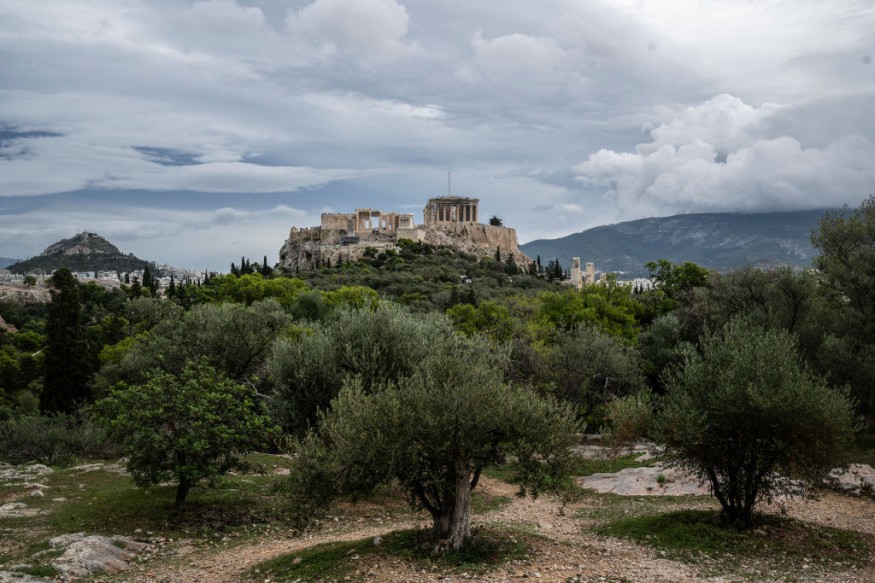
Archaeologists excavating Temple of Amarysia Artemis, a sanctuary dedicated to the Greek goddess Artemis, have revealed the discovery of a 2,000-year-old temple and relics, including gold and silver jewelry.
Temples And Treasures
A "monumental building in the heart of the sanctuary" was discovered in 2017, according to Greece's Ministry of Culture.
Another temple was discovered in 2023. The ministry reported that excavating this second temple yielded "rich relics" and jewelry. Other excavations uncovered houses from the ninth and eighth centuries B.C.
Those buildings included several hearths positioned in the temple's nave, including the ash-caked altar loaded with offerings like pottery, vases, Corinthian alabaster, or carved mineral gypsum, gold and silver jewelry studded with coral and amber, amulets, and bronze and iron fittings.
The altar also had many pieces of burned bone.
Some of the ceramic pieces predate the newfound temple and were burned in the late eighth century B.C., prompting experts to believe that the altar was formerly outside the temple but was later transferred within.
In the sixth century B.C., brick partitions were built at the sanctuary's heart for increased stability, leading researchers to believe that the temple was "partially destroyed" by a fire.
Archaeologists discovered many dry stone walls from another building that had stood on the site, as well as several metal figures fashioned like bulls and rams beneath the temple. They also discovered fragments of buildings from the seventh and ninth centuries BCE.
Next to the first temple, there is a defensive system from the more recent early Copper Age, which lasted from 4000 to 3500 B.C.
A crew of Swiss and Greek archaeologists conducts the excavations on an annual basis. The ministry stated that the research effort began approximately 15 years ago.
Study Of The Site
A horseshoe-shaped altar was the most distinctive of the designs, with thick layers of ash rich in burned bones indicating constant use.
"The possibility that some of them predate the temple cannot be ruled out. The first level of use of the horseshoe altar yielded pottery dating to the end of the 8th century BC," the ministry said.
Geometric period bronze figures depicting bulls and rams were uncovered in what the experts believe to be some of the oldest portions.
The site's history is considerably more extensive than the temple itself, with test cuts revealing remains of buildings dating back to the ninth century BC.
Although the investigation into the earliest of these levels has only recently begun, the first discoveries reveal that the worship had its beginnings in the centuries after the end of the Mycenaean period.
The sanctuary and its temples are being studied alongside a survey of the surrounding area. Officials stated that the study "aims to understand the inclusion of the sanctuary in the ancient landscape" by examining the area, its rural settlements and agricultural land, as well as connectivity and links between ancient cities.
Earlier this week, Greek archaeologists revealed the discovery of an old aqueduct built by a Roman emperor, together with more than two dozen silver coins.
In 2015, a 3500-year-old warrior cemetery was discovered in southern Greece, containing solid gold rings, elaborately carved swords, fine-toothed ivory combs, and over a thousand priceless stone beads.
The treasure, according to the ministry, is "the most important to have been discovered in continental Greece in 65 years."
Related Article : Ancient Roman Odeon Discovered by Archaeologists at Remote Site in Crete
© 2026 NatureWorldNews.com All rights reserved. Do not reproduce without permission.





